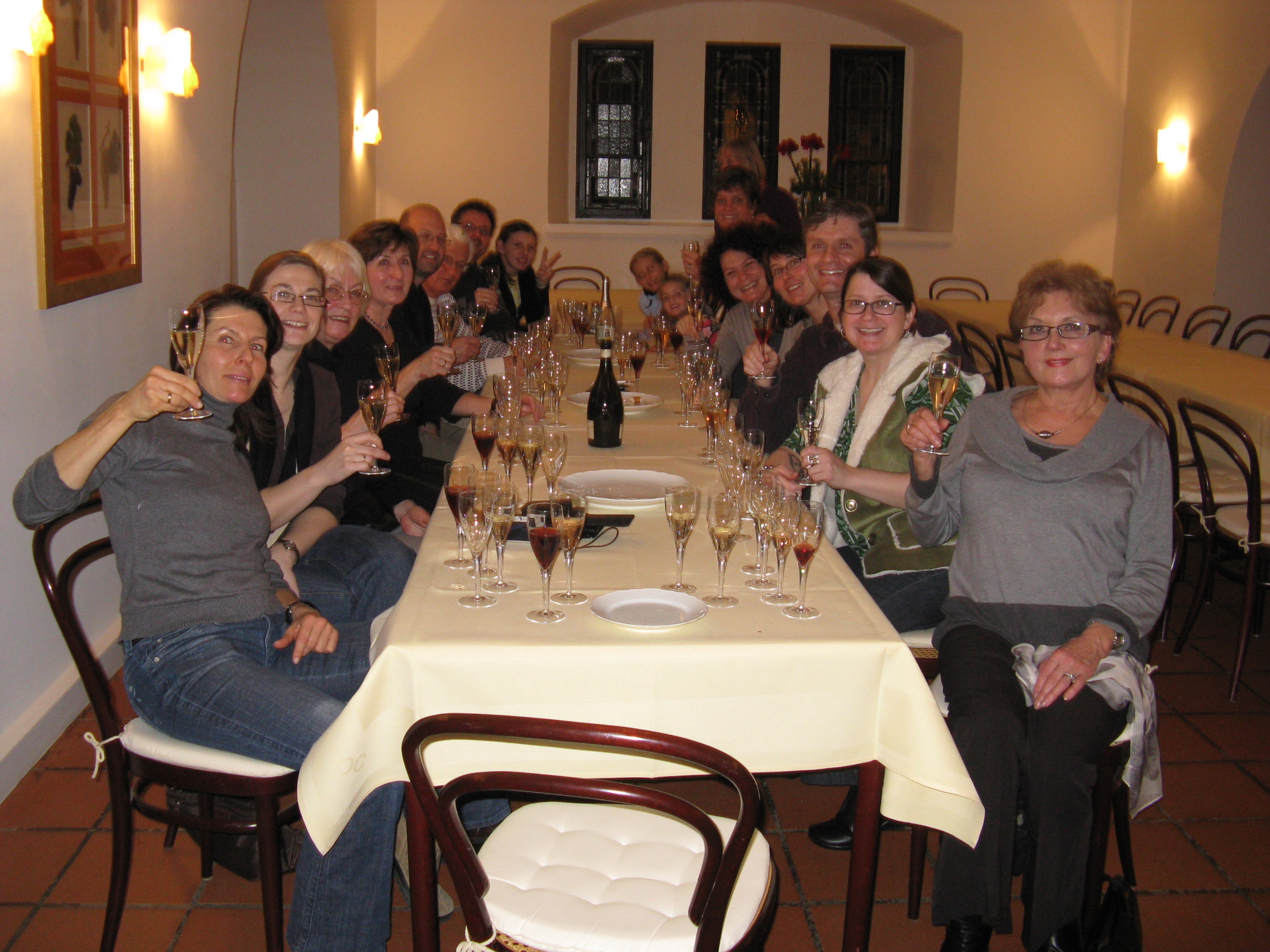2010.
Maybe as soon as Fall 2009.
Virtually every car maker is now talking about coming out with an electric vehicle, and soon. And I mean every one, including makes that haven’t had much of an enviro profile up to now — GM, Ford, Chrysler, Nissan, Volkswagen, Mitsubishi, all making announcements recently. Now, certainly, a lot of this is just PR to catch the wave and attract bailout money (and more on three specific models below), but it does seem like 2010 will be a watershed year for electric vehicles. One could debate whether “2010” means “calendar year 2010” or “model year 2010”, but by late CY2010 I am certain that electric vehicles will be all over the news, and all over the dealer lots.
I last bought a new car in 2000, and I keep my cars for 10 years, so I’m due in 2010. Technically I’m due in early 2010, and frankly I can’t wait (ladies and gentlemen, if Consumer Reports’ repair database says that a make/model is unreliable, you better believe it). But I probably will be willing to wait until late 2010 if there are indications that the right model is coming.
I’m prone to obsessing about upcoming purchases, so I basically prohibited myself from really studying electric / hybrid cars until I was 2 years away from the next purchase. Which meant that starting last spring, I started keeping up with car news. There are a number of news feeds that I keep up with now:
That last one is the most prolific, and the most bewildering. The Truth About Cars (TTAC) takes no prisoners in their treatment of the auto industry, especially the US industry, and it’s interesting to be able to read this insider info without the polish, or kow-towing, that you’d get in Car And Driver or The Detroit News. They’re quite opinionated over there at TTAC, to a fault, but in between the blowhard editorials by owner Robert Farago you have lots of juicy insider info, usually days or weeks before the mainstream press gets around to it (or doesn’t). There’s also Jalopnik and Autoblog, but I don’t have the time to figure out which one has the tone and coverage that best suits what I’m looking for. I’m already looking forward to the day when I buy the car and can stop keeping up with this firehose of data.
Electric Car Myths
Any discussion of electric vehicles has to start off debunking some myths.
Myth #1: With an electric car, you are just transferring the point of pollution.
Let’s take the worst case, an electric car powered 100% by the dirtiest coal power plant. In that case, it turns out that you will emit 70% LESS carbon dioxide for any given distance traveled. A large power plant is simply far more efficient than the little portable gas engine in your car. [source: http://www.evworld.com/evguide.cfm ]
And realistically you won’t be in the worst case most of the time — you’ll be drawing power from cleaner sources than the dirtiest coal. In the BEST case scenario you can charge using solar energy from your roof. That is just not even possible with a fossil-fuel solution. An EV turns “can’t” into “can”, as in “I CAN drive using clean energy if I want”.
Myth #2: Anemic performance
This myth has some legs to it. Batteries don’t have nearly the energy density of gasoline, so you’re starting with a disadvantage right away. Car makers shave every ounce they can from the car’s weight (thus improving the power/weight ratio and thus performance) anywhere they can, and that includes the drivetrain … and the battery! So you just have less energy to start with. But electric motors are inherently more efficient at converting energy to motion than internal combustion engines, and fast electric cars do exists (see Tesla and the NEDRA). This myth is rapidly being busted.
Further, you can actually argue that electric vehicles have better performance. Unlike internal combustion engines, electric motors have full torque even at their lowest speeds. In a series hybrid, the gas engine simply doesn’t ever directly interact with the driveshaft, but is instead used to power a generator. So you will always get that nice torquey response.
Myth #3: Poor range
Yup, a pure electric vehicle is going to have a lot less range than a regular car. Which is why hybrids are so popular. You still get the efficiency of an electric, but with a gas tank for the long rides. Most of my driving is 10 miles or less, so having the gas capability for the occasional long trip is fine.
My Own Desires
– I have to be able to plug it in to charge it. Period. I am not interested in hybrids that merely improve gas burning efficiency. I want the option of not using gas at all. Note that I’m not excluding gas/electric hybrids here; I just want to be able to plug it in and use the cheaper and more efficient energy from the grid.
– performance — I would never be happy with the geriatric wheezing of a Prius; I need a car that leaps off the line and can be thrown into corners; this will probably be the toughest criterion to meet.
– instant throttle response — electric cars have fundamentally different drivetrains than gas combustion engines. Regular gas-engine cars need multi-speed transmissions because of the gas engine’s limitations. Electric motors have wide RPM range and torque across that range, so it’s possible that there won’t be a transmission at all (like the Tesla) or it’ll have a CVT. It’ll be sad to give up my stick shift, but as long as I still have the instant throttle response, I’m happy.
– series hybrid only — no cheating, no letting the gas engine drive the wheels directly; gas engine should only generate electric power for the motors and hopefully some battery charging; also known as a “range-extended electric vehicle” (REEV).
Specific models
Chevy Volt
This is the one that’s getting a ton of attention in the press, and has lots of mindshare, and it’s all about politics. GM wants a bailout ($25B, $50B, $75B, oh my!) and they’ve rushed this electric hybrid into view as proof that they have a plan for the future. It’s a huge fraud, but they’ll likely get what they ask for, because it’s also election season, and there’s an awful lot of swing votes in the rust belt. [see note below about the timing of this post]
The Volt concept vehicle had everyone excited (personally I thought the sightlines from inside would be awful, worse than an Audi TT) but then GM got real and came out with … a dull econobox. Maybe in person it’ll look better, and maybe I’ll warm up to it, but right now I’m not enthusiastic. Plus it’s a GM, which is a huge black mark in my book.
In the Volt, a gas engine powers a generator which supplies electric power to the electric motor; this is a serial hybrid design instead of a parallel hybrid like the Prius, and that’s what I want. I want wheels driven by electric motor, period. The latest word is that the Volt’s gas engine / generator will indeed drive the electric motor but not charge the battery. That’s too bad but I don’t think it’s a dealbreaker for me. However, all this rumor mongering does illuminate the fact that this is all vaporware.
Nice little review from ArsTechnica (Oct 2008)
Toyota Prius
I’m NOT talking about the models on the streets now, which are the 1st and 2nd generation models. The 3rd generation Prius will be a plug-in, and as of Aug 2008 the word is that Toyota bumped it up from a 2010 to a 2009 model, meaning it’ll be out earlier in 2009, and thus will be the first major PHEV to market. That’s going to steal a lot of thunder from GM’s Volt, and it’ll be a far more mature (read: reliable) solution than GM ever could pull off, so look forward to some serious GM propaganda whenever that Prius does come out.
Paul Niedermeyer of TTAC said this in Aug 2008 regarding Toyota’s plans for battery technology: “Toyota sees Li-ion as a step towards higher capacity (air) batteries. But they’re covering all the bases, keeping NiMh in production for low-cost hybrids, and Li-ion for the plug-ins. The real point here is that the cost effectiveness of Li-ion plug-ins is going to be terrible, unless gas more than doubles in a few years. Toyota feels that serious EV’s and plug-ins will require the new battery tech before they can really take off, unlike GM, Tesla and Fisker, who are banking all on Li-ion.”
I seriously doubt that Toyota can come out with a Prius that will appeal to me on performance and styling, but they’re the 800 pound gorilla in this market and can’t be ignored.
Tesla Roadster
Ah, Tesla. Nerds swoon over Tesla. It’s the ultimate geek fantasy car — all-electric, looks and drives like a Lotus, great brand name. For years now Tesla’s been running the PR machine, promising near-supercar performance and decent range in an electric car. But they’ve taken f-o-r-e-v-e-r to get to market, and as of right now they’ve delivered about 15 units yet burned through massive amounts of funding. Turns out that there are lots of nerds with lots of money who are so smitten by this thing that they’ll throw their investment cash at the company just to be associated with it. I’ll admit to idly fantasizing about spending $109,000 for one of these. Especially after reading glowing reports like this one.
Here’s a great Fortune article with a behind-the-scenes look at what happened within Tesla (Elon Musk vs Martin Eberhard, transmission troubles, etc.)
And keep an eye on TTAC for the latest inside scoop via their Tesla Death Watch.
A few comparisons
Comparison of Toyota Prius PHEV (3rd gen) and Chevy Volt:
http://www.thetruthaboutcars.com/the-great-hybrid-showdown-chevrolet-volt-vs-toyota-prius/
Comparison from Nov 2007:
http://www.diyelectriccar.com/blogs/2007/11/six-major-preproduction-electric-vehicles-compared.html
and commentary on the above from the Slashdot crowd at the time (some insightful, some not at all):
http://hardware.slashdot.org/comments.pl?threshold=4&mode=nested&sid=367453
Other media coverage
And in the past month or so, PHEV coverage has really picked up in the mass media, to the point where I can’t keep up:
CBS’ 60 Minutes feature: “The Race For The Electric Car”
New York Times Magazine cover story on clean energy solutions driven by the private sector
CNN story on aftermarket plug-in conversions
EV-World comparison of PHEVs and series vs parallel hybrid discussion
Electrical infrastructure
Looking for somewhere to invest your money?
Think about what kind of impact large-scale adoption of EVs would have on our energy infrastructure. Currently we use petroleum (tankers, pipelines, trucks, gas tanks) to move that energy around.
If energy coming into this country via petroleum (joules) is to be replaced by electric power generated natively (sticky energy, as Andy Grove puts it), then there is going to need to be a massive upgrade in the power transmission infrastructure, and infrastructure that is already buckling. The Northeast Blackout of 2003 was ultimately traced to an Ohio company’s failure to do even basic maintenance on their transmission lines, and the failure of FERC to enforce standards. (By the way, California’s 2000/2001 blackout problem was due to market manipulation by Enron and the like, not lack of infrastructure. Blackouts in December? Come on.)
July 2008: General Motors is teaming up with 30 utilities in 37 states and with the Electric Power Research Institute to develop a charging infrastructure for electric cars: http://news.cnet.com/8301-11128_3-9996348-54.html?hhTest=1
Ethanol and Hydrogen
Ethanol-based solutions are simply out of the question. Ethanol production is a wildly negative energy process, so if you’re using Ethanol you’re actually making the environmental situation worse. Sure, you’ve reduced dependence on foreign problem, but that’s only half the problem we’re trying to solve here.
So why do why have ethanol-based solutions? Here’s Bob Dole in 1996, as legislation was being crafted to support (read: fund via taxes) ethanol production and distribution:
“There are 21 farm states, and that’s 42 senators. Don’t waste any more of our time or your time telling us it’s a bad idea, because they’re going to do it.”
Fortunately, that was in 1996, it’s now 12 years later, and some common sense has seeped into the national brain and the bloom is off the ethanol rose. John McCain has stuck to his guns and remains against ethanol subsidies, which considering he’s flipped on just about everything else means that the ethanol lobby is weak. Thank God that’s over, at least in the horrible corn-based energy -negative form that we’ve seen it. Perhaps sustainable ethanol production will arrive and mature in the form of switchgrass or something, but for now it’s just nothing more than a talking point.
Hydrogen fuel cell cars are interesting, but at this point they are still an academic exercise, for several reasons. One, there is no hydrogen distribution infrastructure in place, and two, high pressure tanks to hold enough H2 don’t exist. But even if those logistical problems got solved, the truth is that a fuel cell process is still one third as efficient as a purely electric process (for illustration, see these slides from Martin Eberhard: 1 2 3 4). And this even holds true for ethanol, diesel, etc. — if you’re set on using any form of flammable liquid, then use it to generate electricity and then power the car, since that’s twice as efficient as burning it directly in an IC engine (slide). Electric generators and motors are simply far too efficient to pass up.
Wrap up
In the last couple months this topic has received a lot of attention from the mainstream press, especially with the soaring gas prices and Detroit’s we-have-electrics-we’re-not-dinosaurs push for a bailout. But I’ve been mildly interested in this for over a decade, and seriously looking into since this spring.
So, there’s the state of the market as I see it in September 2008. This is just a snapshot in time, and some of what I’m saying above may be outdated by next week, not to mention next year. But by this time next year (2010 model year start) we should be seeing some new models actually appearing on the market, and I’ll start looking at things like battery warranties, driving performance, electric power costs, etc.
Moving to an electric vehicle changes “can’t” to “can”, and I’ve now decided to personally change “could” to “will”.
Hopefully by no later than the end of 2010. Mark my words!
[note: I’m publishing this in late November but backdating the post to September. I’ve been collecting info into this post for a year, and had this post pretty much ready to publish in Sept, but then didn’t actually do it. I have NOT been keeping up with the news on this front since Sept; in fact I’m aware of some developments that have taken place since then that modify the above slightly. Alas, all I have the time for right now is to just go ahead and publish this. Sometime next year I’ll come back around with a Part 2 update.]
 We arrived in outside Mainz (Hechtsheim) to join up with the extended family (20 people, to expand to 30 by Christmas day) at the home of Aunt Gisela and Uncle Helmut, and also the new home down the street of cousin Andreas (Winny) and his wife Marianne. In the late afternoon we took the streetcar down into Mainz to go on a Sektkellerei (sparkling wine cellar) tour at the Kupferberg sekt factory.
We arrived in outside Mainz (Hechtsheim) to join up with the extended family (20 people, to expand to 30 by Christmas day) at the home of Aunt Gisela and Uncle Helmut, and also the new home down the street of cousin Andreas (Winny) and his wife Marianne. In the late afternoon we took the streetcar down into Mainz to go on a Sektkellerei (sparkling wine cellar) tour at the Kupferberg sekt factory.  With commentary generously in English, the tour guide led our large family group down into the subterranean caverns lined with filth (that’s not filth, that’s useful fungus!) and filled with fermenting bottles. At the farthest reaches of the tour were some Roman caves over two millenia old. After the tour was a sekt tasting with five different glasses with varying degrees of flavor, dryness, sugar, etc. We learned much and enjoyed drinking with our friends more and more as the tasting wore on.
With commentary generously in English, the tour guide led our large family group down into the subterranean caverns lined with filth (that’s not filth, that’s useful fungus!) and filled with fermenting bottles. At the farthest reaches of the tour were some Roman caves over two millenia old. After the tour was a sekt tasting with five different glasses with varying degrees of flavor, dryness, sugar, etc. We learned much and enjoyed drinking with our friends more and more as the tasting wore on.  ending at the
ending at the  Christkindlmarkt spelunking. We went to one market that was a medieval-themed one –sort of like our cheesy Renaissance Fairs in the States, but, like, in the correct country and with actual antiquities in the surroundings. Some of the booths had animated puppets portraying traditional German fairy tales: Little Red Riding Hood, Hansel and Gretel, The Pope and the Snowman…
Christkindlmarkt spelunking. We went to one market that was a medieval-themed one –sort of like our cheesy Renaissance Fairs in the States, but, like, in the correct country and with actual antiquities in the surroundings. Some of the booths had animated puppets portraying traditional German fairy tales: Little Red Riding Hood, Hansel and Gretel, The Pope and the Snowman… 
 Sabrina said that we should bring the toy inside before nightfall or the “little foxes” would get it and take it to their dens. (We think she meant ferrets.) Sabrina also keeps several rescued
Sabrina said that we should bring the toy inside before nightfall or the “little foxes” would get it and take it to their dens. (We think she meant ferrets.) Sabrina also keeps several rescued  We passed through the tiny town of Mietenkam (where Chris had spent time as a teenager) and the slightly larger town of Grassau on our way into the Alps, on the hunt for snow. Andreas said we must have a “real winter” and he wasn’t going to take no for an answer.
We passed through the tiny town of Mietenkam (where Chris had spent time as a teenager) and the slightly larger town of Grassau on our way into the Alps, on the hunt for snow. Andreas said we must have a “real winter” and he wasn’t going to take no for an answer. We trudged through the ski town to a favorite restaurant of Andreas’s where we had a traditional fare — a soup with dumpling and meatball, and a pastry dish called Kaisersomething.
We trudged through the ski town to a favorite restaurant of Andreas’s where we had a traditional fare — a soup with dumpling and meatball, and a pastry dish called Kaisersomething. and finally we stumbled completely randomly on … a
and finally we stumbled completely randomly on … a  Sharon took a zillion photos and is still beside herself! Exhausted and thrilled, Andreas then took us to get some gluhwein from
Sharon took a zillion photos and is still beside herself! Exhausted and thrilled, Andreas then took us to get some gluhwein from 
 After arriving in Munich and meeting up with Chris’s aunt Renate, we headed over to the apartment of cousin Connie and her boyfriend Holger for a nice German lunch (sausages, cold cuts, cheese, bread, champagne, beer) followed by some wandering around the cobble-stoned city. We went to some
After arriving in Munich and meeting up with Chris’s aunt Renate, we headed over to the apartment of cousin Connie and her boyfriend Holger for a nice German lunch (sausages, cold cuts, cheese, bread, champagne, beer) followed by some wandering around the cobble-stoned city. We went to some  It was cold and drizzling but we stayed warm with roasted chestnuts, and occasional
It was cold and drizzling but we stayed warm with roasted chestnuts, and occasional 
